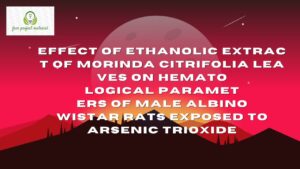TABLE OF CONTENTS
Title page- – – – – – – – – i
Certification- – – – – – – – ii
Dedication – – – – – – – – iii
Acknowledgements- – – – – – – iv
Table of contents- – – – – – – – v-vi
CHAPTER ONE
1.0 Introduction- – – – – – – – 1-3
CHAPTER TWO
2.0 General Overview of Sweet potato– – – – – 4
2.1 Classification and Origin of Sweet potato- – – – 4-5
2.2 Botany and Physiology- – – – – – – 5-7
2.3 Nutritional Composition of sweet potato- – – – 7-10
2.4 Health Benefit of Sweet potato- – – – – – 11-13
2.5 Processing and Utilization- – – – – – 13-16
2.6 Bioavailability of Bioactive compounds in sweet potato- 16-18
CHAPTER THREE
3.0 Medicinal and Phytochemical properties of sweet potato- 19-20
3.1 Medicinal Benefits of sweet potato- – – – – 20-21
3.1.1 Antioxidant Activity- – – – – – – 21-22
3.1.2 Antidiabetic Activity- – – – – – – 22-24
3.1.3 Anti-cancer Activity- – – – – – – 24-25
3.1.4 Anti-ulcer Activity– – – – – – – 25-26
3.1.5 Immune System Effects- – – – – – – 26-27
3.1.6 Cardiovascular Effects- – – – – – – 27
3.2 Phytochemistry of sweet potato- – – – – 27-28
3.3 Safety Evaluation of Sweet potatoes- – – – – 28
CHAPTER FOUR
4.1 Summary- – – – – – – – – 29
4.2 Conclusion- – – – – – – – – 30
References
CHAPTER ONE
1.0 Introduction
Sweet potato, Ipomoea batatas L. (lam), is an important economic crop in many countries. In terms of annual production sweet potato ranks as the fifth most important food crop in the tropics and the seventh in the World Food Production, after wheat, rice, maize, barley and cassava (FAO, 2016). Sweet potato fulfills a number of basic roles in the global food system, all of which have fundamental implication for meeting food requirements, reducing poverty and increasing food security (El. Sheikha and Ray, 2017).
Sweet potato roots have high nutritional value and sensory versatility in terms of taste, texture and flesh colour (white, cream yellow, orange, purple). The varieties with high dry matter (>25%), white-cream flesh colour, and mealy firm texture after cooking are preferred by the consumers in the tropics. These varieties are known as tropical sweet potato (e.g. “bianito”, “batiste”, “camote”). The purple-fleshed sweet potatoes varieties with attractive colour and high anthocyanin content are the specialty type in Asia. In the United States, the commercially popular type is the orange-fleshed sweet potato with low dry matter content (18.25%) high β-carotene level, sweet and moist-texture after cooking. This sweet potato type is imprecisely called “yam” which is not the true tropical yam of Dioscorrea species. Historically, African, Americans in Luisiana referred this moist-sweet potato as “nyami” because it reminded them of the starchy tuber of that name in Africa.
Depending on the flesh colour, sweet potatoes contain high levels of β-carotene, anthocyanins, phenolics, dietary fibre, vitamins minerals and other bioactive compounds. The β-carotene in organge-fleshed sweet potatoes can play a significant role as a viable long term food based strategy for combating vitamin A deficiency in the world. Studies in Africa demonstrated that increased consumption of orange fleshed sweet potatoes improved the vitamin A status of children, pregnant women, and lactating mothers (Hotz et al., 2012).
Further, polyphenolics from purple-fleshed sweet potatoes exhibited diverse biological activities, including protective antioxidant, anti-inflammatory, anti-cancer, anti-diabetic and hepatoprotective activity effects (Hu et al., 2016; Lim et al., 2013).
Sweet potato has a strong potential to contribute to better nutritional quality of our diets around the world. This chapter provides a contemporary review of production, quality and processing aspects of sweet potatoes.


